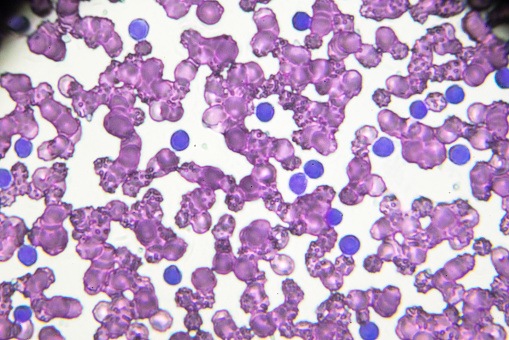
“Patients with chronic lymphocytic leukemia [CLL] have a higher risk of developing second primary malignancies [SPMs],” according to Sikander Ailawadhi and colleagues, “but this risk has not been assessed with more recent population-based data that consider the growing use of targeted oral agents.”
Ailawadhi and colleagues conducted a cohort study and presented their findings at the 64th American Society of Hematology Annual Meeting and Exhibition. They identified patients with newly diagnosed CLL using data from the Surveillance, Epidemiology, and End Results-Medicare database. Patients were assessed for >36 months. Whether a patient was treated or untreated was defined based on procedure/drug codes for CLL treatments, and SMPs were defined as “having an inpatient diagnosis code for a hematologic (excluding CLL) or solid tumor malignancy, or 2 nonspecific outpatient codes at least 30 days apart.” Patient demographics, clinical characteristics, and SMP rates and timing were retrospectively assessed.
In total, 3053 patients with newly diagnosed CLL were included in the analysis. Of these patients, 620 were treated and 2433 were untreated within 36 months of initial diagnosis. Among those who were treated within 36 months of diagnosis, the median time to first treatment was 13.9 months, and 44.8% received an anti-CD20 plus chemotherapy. The remainder of treated patients received anti-CD20 monotherapy, targeted oral monotherapy/combination therapy with a BCL-2 inhibitor or a Bruton’s tyrosine kinase inhibitor, and other treatments. Up to 12.5% of untreated patients eventually received their first CLL treatment at a median 51 months.
Regarding SPMs, 20.9% of patients developed at least 1 SPM, although a greater proportion of those were seen in patients in the treated cohort. A total of 218 SPMs were observed across treated patients, and 39.2% of patients developed >1 SPM. Among those who were untreated, 472 patients developed SPMs, with 20.1% of those developing >1 SPM. Across both cohorts, 29.3% developed an SPM in the first 12 months following CLL diagnosis, and 64.9% developed an SPM at 36 months after diagnosis. For both treated and untreated patients, the most common SPMs were squamous cell carcinoma, acute myeloid leukemia, acute lymphocytic leukemia, prostate cancer, lung adenocarcinoma, and chronic myeloid leukemia.
“The current analysis did not show that any of the anti-CLL treatments were more likely to contribute to the risk of SPMs post-therapy,” the researchers concluded. “Additional analyses evaluating the impact of therapy type and baseline disease and patient characteristics on incidence of SPM are ongoing.”
Source: Ailawadhi S, Ravelo A, Ng C, et al. Real-world assessment of second primary malignancies in a treated and untreated chronic lymphocytic leukemia population in the United States. Abstract #3589. Presented at the 64th ASH Annual Meeting and Exhibition; December 11, 2022; New Orleans, Louisiana.







 © 2025 Mashup Media, LLC, a Formedics Property. All Rights Reserved.
© 2025 Mashup Media, LLC, a Formedics Property. All Rights Reserved.